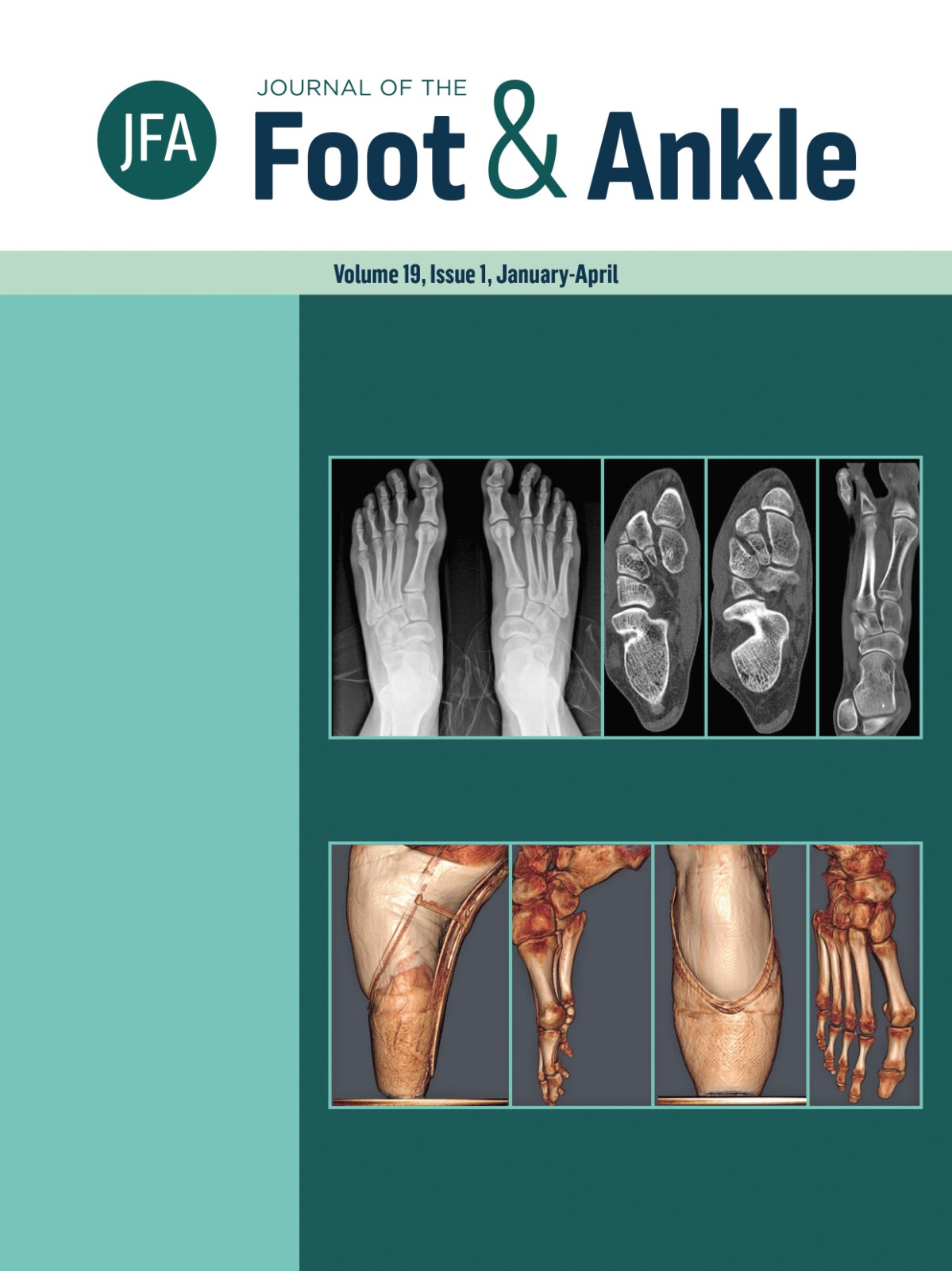The search for the holy grail in cavovarus foot
DOI:
https://doi.org/10.30795/jfootankle.2025.v19.1899Palavras-chave:
Cavovarus foot; Charcot-Marie-Tooth disease; Tendon transfer; Osteotomy; Arthrodesis; Foot deformity.Resumo
Introduction: The surgical treatment of cavovarus foot is complex and multifactorial, requiring a personalized approach that respects its biomechanical and neuromuscular intricacies. Despite numerous techniques described, achieving a plantigrade, pain-free, and functionally stable foot remains the ultimate goal—the so-called “holy grail” of treatment. Methods: This narrative review outlines a stepwise strategy for the surgical correction of cavovarus foot, emphasizing the role of soft tissue releases, tendon transfers, osteotomies, and fusions. The intervention sequence is tailored according to deformity flexibility, apex location, and muscular imbalance patterns, drawing from principles refined in managing Charcot-Marie-Tooth disease and adapted to other etiologies. Results: Adequate soft tissue release—especially of the Achilles tendon, plantar fascia, and medial restraints—precedes osseous realignment. Tendon transfers, such as those involving the posterior tibial tendon or peroneus longus, aim to neutralize deforming forces and preserve correction. Decisions between osteotomy and arthrodesis hinge on the rigidity and anatomical apex of the deformity, often requiring midfoot realignment. Toe deformities, particularly hallux malleus, are addressed through targeted techniques like the Jones procedure, following proximal correction.
Conclusion: Successful reconstruction of the cavovarus foot depends on a dynamic, intraoperatively responsive algorithm that integrates functional muscle assessment, sequential releases, and appropriate structural correction. Lessons learned from neuromuscular cases contribute significantly to optimizing outcomes in idiopathic or post-traumatic deformities. Level of evidence V; Experience-Based Expert Opinion.
Downloads
Publicado
Como Citar
Edição
Seção
Licença
Copyright (c) 2025 Journal of the Foot & Ankle

Este trabalho está licenciado sob uma licença Creative Commons Attribution-NonCommercial 4.0 International License.







